One of my fond memories as a child was reading an article written by Williams Davis Jr. which appeared in an issue of the Trinidad Naturalist magazine. The article resonated with me for whatever reason and I would treat myself to reading it on a rainy day, imagining that I was there. It spoke of things that seemed far removed from me. It spoke of lush rainforests, mist cloaked valleys, toucans sunning themselves after the mountain rains and the calls of distant bellbirds. It spoke of a unique old house. It spoke of the Asa Wright Nature Centre.

The Asa Wright Nature Centre is perhaps Trinidad and Tobago’s most famous natural history attraction and is world renowned as a neotropical bird-watching hotspot. The quaint wooden verandah is sometimes billed as the world’s most famous and is usually always occupied by several birdwatchers, photographers and casual visitors alike (accompanied by the sound of rapid fire camera shutters and punctuated by the occasional exclamations of excitement).

But the centre is much more than a mere attraction for camera toting tourists. The history of the great house begins around 1906 when it was the focal point of the Springhill Estate’s cocoa and coffee plantation. It changed hands a couple of times until it came into the possession of an Icelandic couple in 1946 – Henry Newcombe and Asa Wright. Interest in the Arima Valley grew in the following years thanks to the work of the eminent naturalist Dr. William Beebe at the nearby Simla Estate. As a result demand for accommodation in the valley grew and eventually Asa Wright opened up the great house for guests. One of those guests, noted artist Don Eckelberry, would eventually see to the creation of the Nature Centre as a means of ensure Springhill Estate was preserved.
Without a doubt, the AWNC’s first claim to fame is its value as a bird watching destination. The birds are everywhere. Sitting in the verandah you are faced with several birding “zones” to scrutinize. Immediately in front of the verandah are the bird feeders. Stocked with fruit and other food items, the feeding trays attract a steady stream of neotropical species like Purple Honeycreepers (Cyanerpes caeruleus), Silver-beaked Tanagers (Ramphocelus carbo) and Crested Oropendolas (Psarocolius decumanus). The dense vegetation behind the feeders provides refuge for more secretive species like the Great Antshrike (Taraba major) and Cocoa Thrush (Turdus fumigatus).
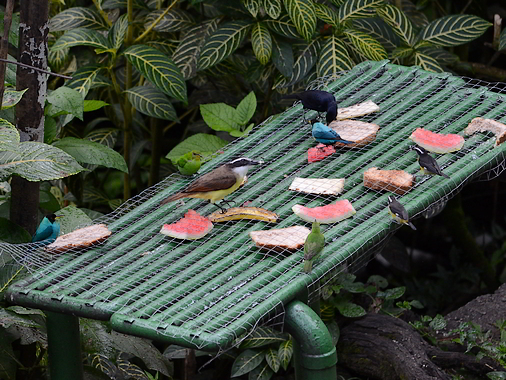
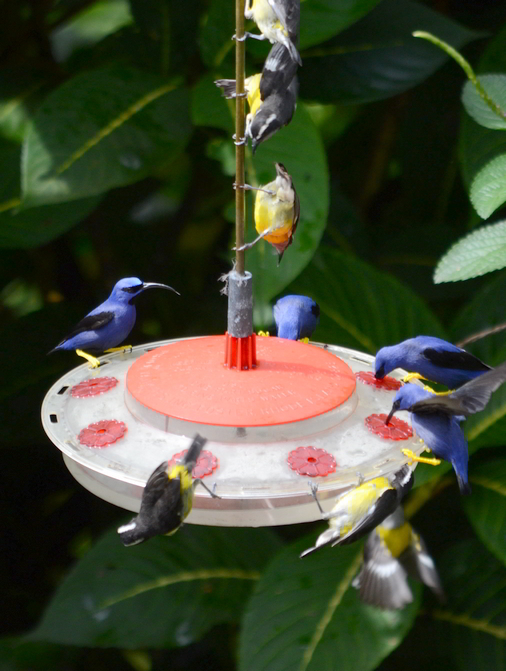

Occasionally the Trinidad Motmot (Momotus bahamensis) will make an appearance here. This motmot was previously regarded as just another subspecies of the Blue-crowned Motmot (M. momota), which is found through much of South America. However in 2010 it was reclassified as a unique species found only in Trinidad and Tobago, thus becoming the country’s second endemic species after the Trinidad Piping-Guan (Pipile pipile).
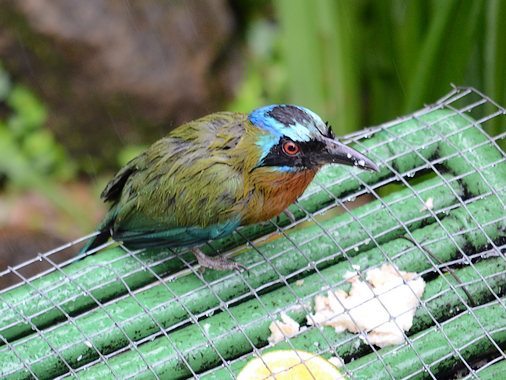
Arguably, the humming bird feeders are a bigger attraction. Here you can easily find gems like the White-necked Jacobin (Florisuga mellivora), Blue-chinned Sapphire (Chlorestes notatus) and Long-billed Starthroat (Heliomaster longirostris). All three species of hermit hummingbird skulk in the thick vegetation planted around the feeders and the gorgeous Tufted Coquette (Lophornis ornatus) frequents the vervain planted along the walkway.



At the time of writing, the Centre’s feeders are also attracting another very special hummingbird. The Brown Violetear (Colibri delphinae) has historically been a rarely seen bird in Trinidad and Tobago due to its preferred habitat in the canopy of highland forest trees. In recent months, however, at least one bird has frequented the feeders here. Larger and more robust looking than the other hummer species, it sports a gaudy patch of violet feathers on its ear coverts and an iridescent green throat patch. Hopefully this species will become a regular visitor to the feeders in time.

To the left of the porch is a very important tree for birders. Here a large Trema tree grows and this tree is absolutely wonderful for seeing a range of forest species at close range. Ochre-bellied Flycatcher (Mionectes oleagineus), Bay-headed Tanager (Tangara gyrola), Turquoise Tanager (Tangara mexicana), Blue Dacnis (Dacnis cayana) … the list goes on.

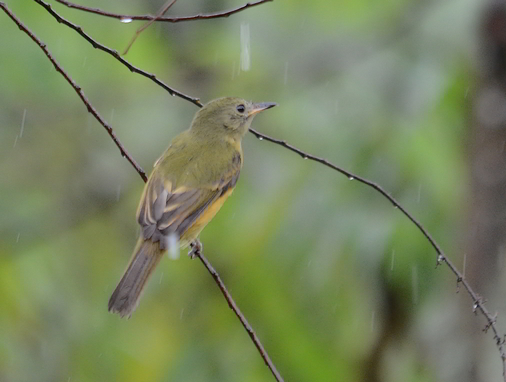
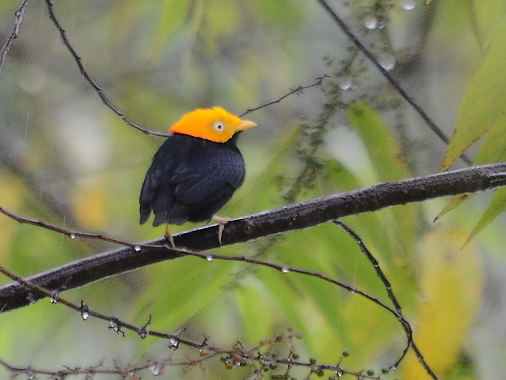
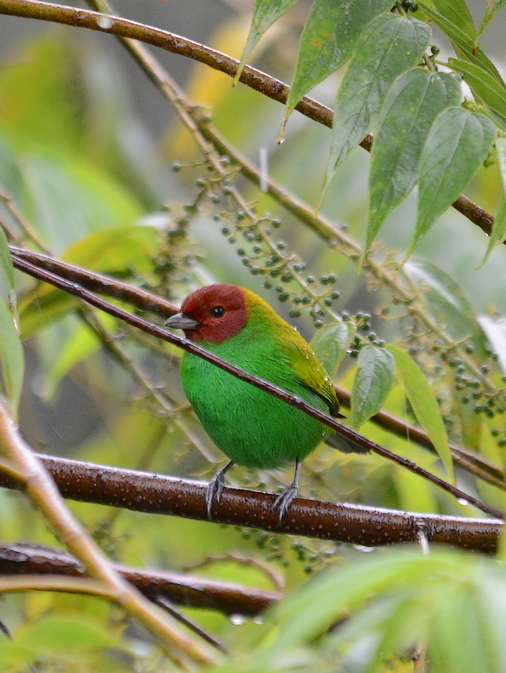
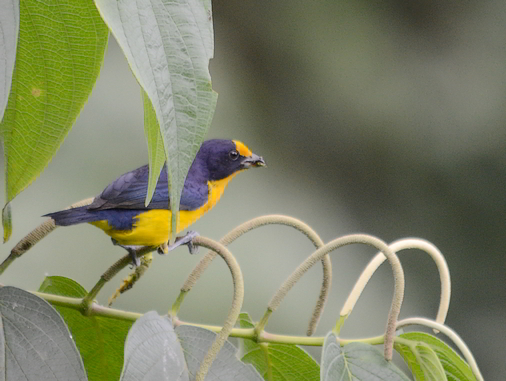
Beyond the feeders, looking down the valley through the verandah’s spotting scope you can sometimes pick out Channel-billed Toucan, Black-tailed Tityra and Double-toothed Kite perched on exposed branches. Keep an eye out on the skies overhead as well – White Hawk, Ornate Hawk Eagle and Black Hawk Eagle are regularly seen.

When you have finally had enough of the porch it’s time to hit the trails. The Asa Wright Nature Centre has miles of trails snaking through its property. One of the main trails is the Discovery Trail and I was surprised to learn from the Centre guides that this trail follows the original foot path which would have been by used by Amerindians (and then plantation owners/workers) for accessing the Blanchisseuse area many years ago. Nowadays, the AWNC is fortunate to have lekking grounds of three different bird species located along this trail, hosting the leks of Golden-headed Manakin (Pipra erythrocephala), White-bearded Manakin (Manacus manacus) and Bearded Bellbird (Procnias averano) – all of which are a delight to watch and are almost guaranteed to put on a show at these locations.
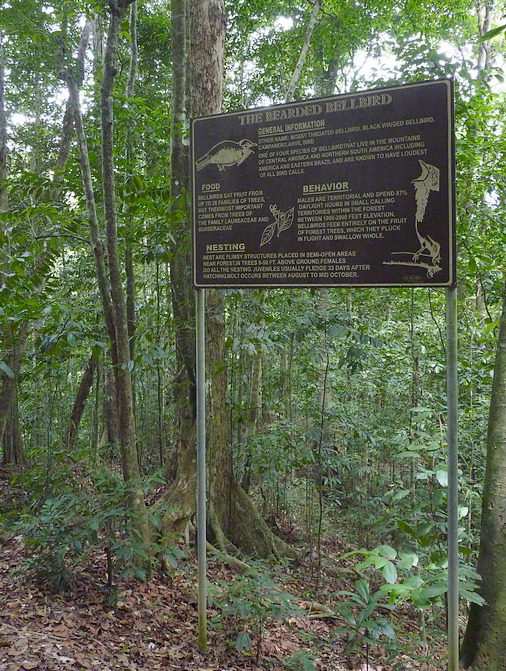
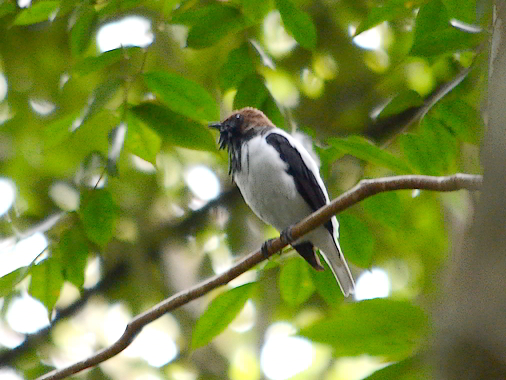
There is another bird attraction which makes the AWNC unique. The Centre is home to what is perhaps the most accessible colony of Oilbirds (Steatornis caripensis) in the world. Oilbirds are strictly nocturnal and seek refuge in dark mountain caves, emerging only at night when they fly great distances in search of oily palms and nutritious forest fruit. Birds, presumably from the caves scattered throughout the northern range, have been found as far as Chaguanas to the south and Hillsborough Dam in Tobago to the east. They are unique in that they are the only echo-locating bird species in the entire world and their clicks and calls fill the air as you view the Centre’s colony at the Dunstan Cave. The birds are so named because fledgling birds contain so much body fat from their diet that native Amerindians and early settlers would collect the baby birds and render them for oil for use in cooking and lighting. The Spanish name for the bird is “guacharo”. Their demonic wails and nocturnal habits give them their other name of “diablotin” or devil bird.

Oilbirds are not the only interesting creatures of the night at the centre. One of my first stops whenever I happen to visit the Centre is to search the insect screens in the reception hall for moths and other insects that were attracted to the lights at night. With some luck you can find quite a range of interesting species.
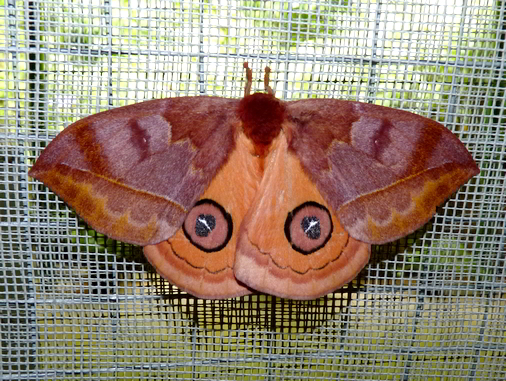
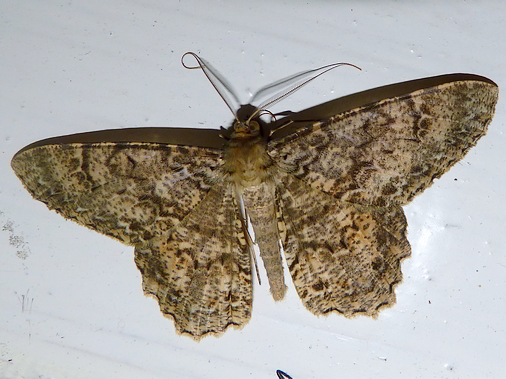
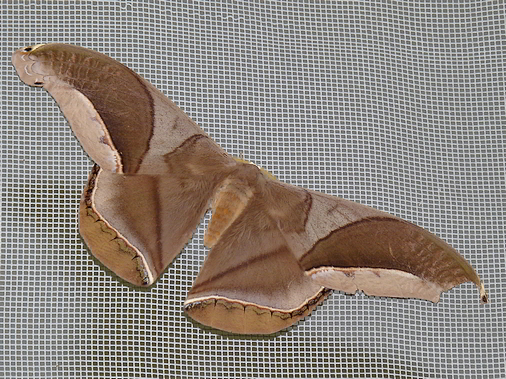
Also in flight at night are various bat species. If the hummingbird feeders are left outside too late you can sometimes catch a glimpse of bats coming in to feed on the nectar. According to Geoffrey Gomes of Trinibats, two bat species are likely visitors to the AWNC feeders – Geoffroy’s Hairy-legged Bats (Anoura geoffroyi) and Common Long-tongued Bats (Glossophaga soricina).
But the tropical nights belong to the invertebrates and various species of stick insects, scorpions, spiders, moths and ants are everywhere. Manicou Crabs (Eudaniela garmani) can also be seen when these land crabs leave their burrows in the forest floor in the cool of the night to feed on plant and animal matter.

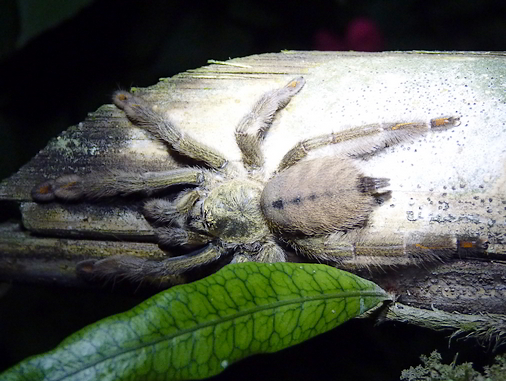
The amphibians and reptiles become more active after dark as well and at night you are surrounded by the sound of various frogs calling from some unseen location. Occasionally, the reflective eyeshine of a snake might turn up in the beam of a torch.
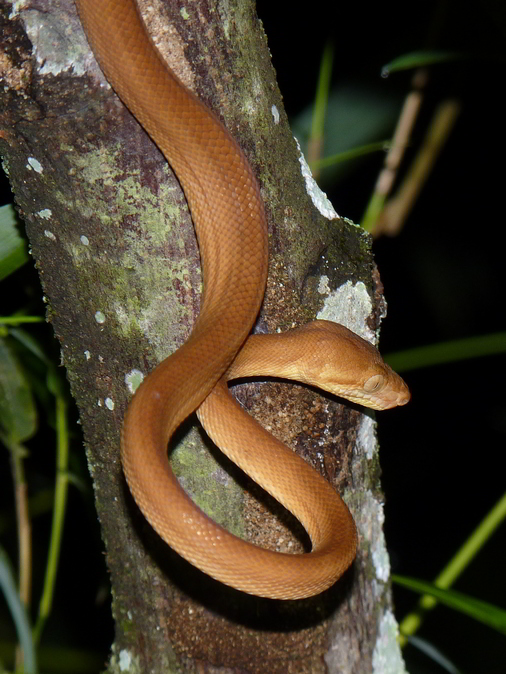

Of course you can see several reptile and amphibian species during the daytime as well. While walking along the less used forest trails you would be well advised to keep an eye out for the cryptically camouflaged Fer-de-Lance (Bothrops asper)– one of Trinidad’s four highly venomous snake species. While the venom of this pit viper contains a dangerous mix of compounds, death from snakebite remains relatively rare in Trinidad & Tobago. Less intimidating than pit vipers are the diminutive Trinidad Stream Frogs (Mannophryne trinitatis) that can always be found near stream sites – a familiar sound to anyone who frequents the Northern range and Central Ranges. Under the birdfeeders you will regularly see the large Tegu (Tupinambis teguixin) searching for scraps that have fallen from the feeders.
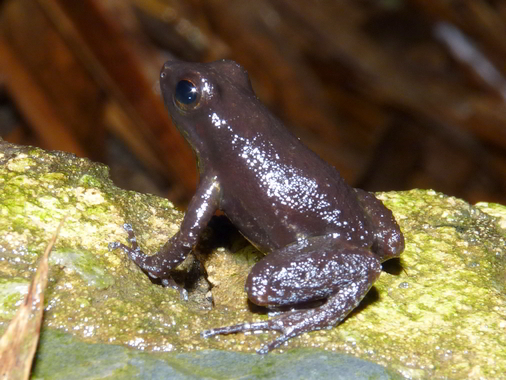
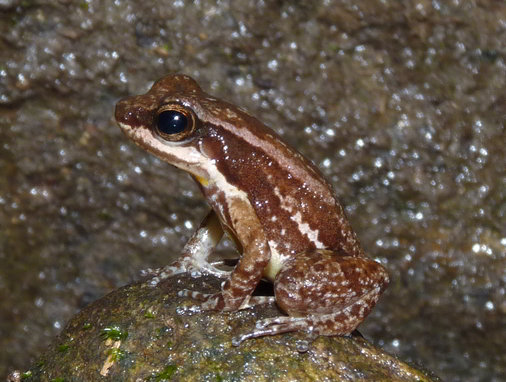

Also searching for birdfeeder scraps are often large rabbit sized rodents known as Agouti (Dasyprocta leporina). These mammals are widely hunted throughout Trinidad and Tobago, but at the Centre they find a safe refuge and as a result they show little fear of human presence.
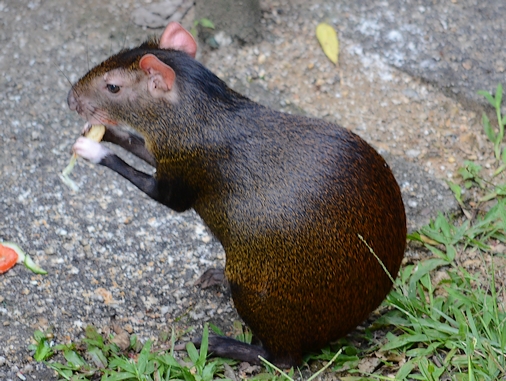
In fact a wide range of mammals inhabit the forests of the Centre. To get a better idea of what was out there I placed a camera along the Adventure Trail for about three weeks. A couple of weeks earlier my good friend Clint Quintal had placed a camera here for a few days and reported promising results with a nice Nine-banded Armadillo showing up on the first night. I was anxious to see what a longer session would bring. At the end of it, however, the only thing of note was a Lappe (Agouti paca).
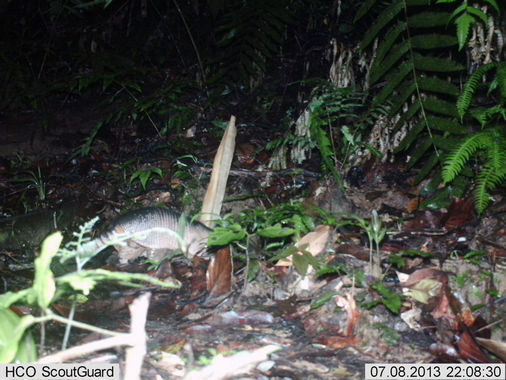
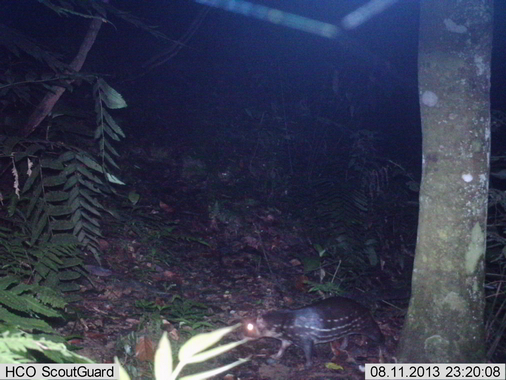
Nonetheless, Centre staff and guests occasionally report encounters with other mammals including Red Brocket Deer and Ocelot so these animals are present. More clues as to what resides on the property can also be obtained at the Centre’s small but very interesting museum.

The higher density of game species here is possibly a reflection of the fact that they are not disturbed by hunters, loggers, quarries etc. In fact conservation is one of the Centre’s main objectives and this is achieved by the acquisition of land within the valley. To date, the Centre has 1335 acres of forest under its protection. The possession of protected land also allows the Centre to facilitate the scientific study of tropical ecosystems and its myriad components. Research is conducted primarily at the Tropical Research Station located at the Simla Estate. The facility, which occupies 211 acres lower down the Arima Valley, was formerly owned by Dr. William Beebe. At least 400 scientific papers have resulted from work at Simla to date. Sadly, despite its international importance, the research station has been negatively affected by the activity of the quarries which surround it, affecting the station’s water supply and disturbing wildlife. AWNC itself also has to contend with similar issues as disturbed land at the Scott’s Quarry lower down the valley is now just about visible from the verandah (With quarrying providing less than 5% of Gross Domestic Product, one wonders if it would not be more advantageous for the country to simply import aggregate from the mainland rather than exploit our own meager deposits).
Despite these issues, the Asa Wright Nature Centre is, and will long continue to be, a key feature in the story of our country’s natural environment. I look with interest to see how the Centre develops in the years to come and hopefully reaches its full potential as a place for conservation, for research, for teaching, for meditation and for enjoyment by all.
